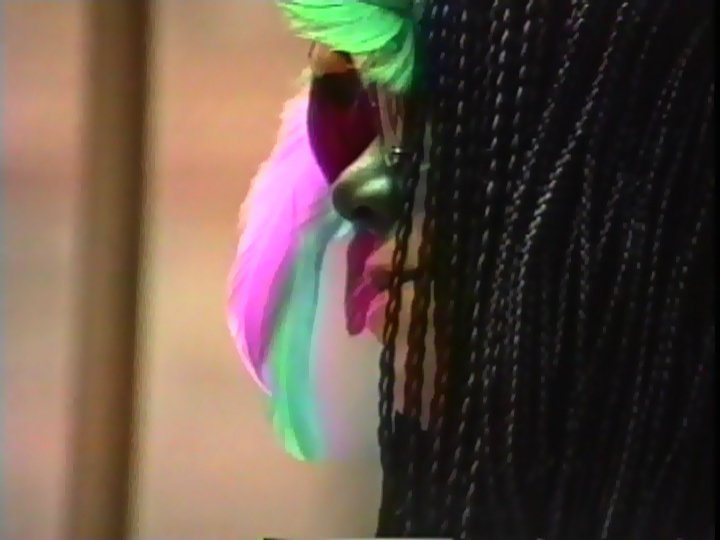In her artwork Coco Fusco offered a critique of human zoos. Young Turks also touches on the issues raised by The Couple in Cage, drawing parallels between the Turkish Olympics and similar shows of the past, which represented cultural domination of several nations over the rest of the world.
In a series of 1992 performances, Coco Fusco and Guillermo Gómez-Peña dressed themselves in primitive costumes and appeared before the public as “undiscovered Amerindians” locked in a golden cage—an exercise in faux anthropology based on racist images of natives. Presented eight times in four different countries, these simple performances evoked various responses, the most startling being the huge numbers of people who didn’t find the idea of “natives” locked in a cage objectionable. This provocative video suggests that the “primitive” is nothing more than a construction of the West and uses comic fiction to address historical truths and tragedies.
The performance offered a critique of human zoos popular in the 19th and early 20th century, which showed Asian and African people in their so-called natural or “primitive” state for public entertainment. These racist shows reflected the attitudes promoted by Social Darwinism.
Young Turks also touches on the issues raised by The Couple in Cage, drawing parallels between the Turkish Olympics and similar shows of the past, which represented cultural domination of several nations over the rest of the world.
The Couple in the Cage: Guatianaui Odyssey
Directed by: Coco Fusco, Paula Heredia
Running time: 31 minutes
United States, 1993
